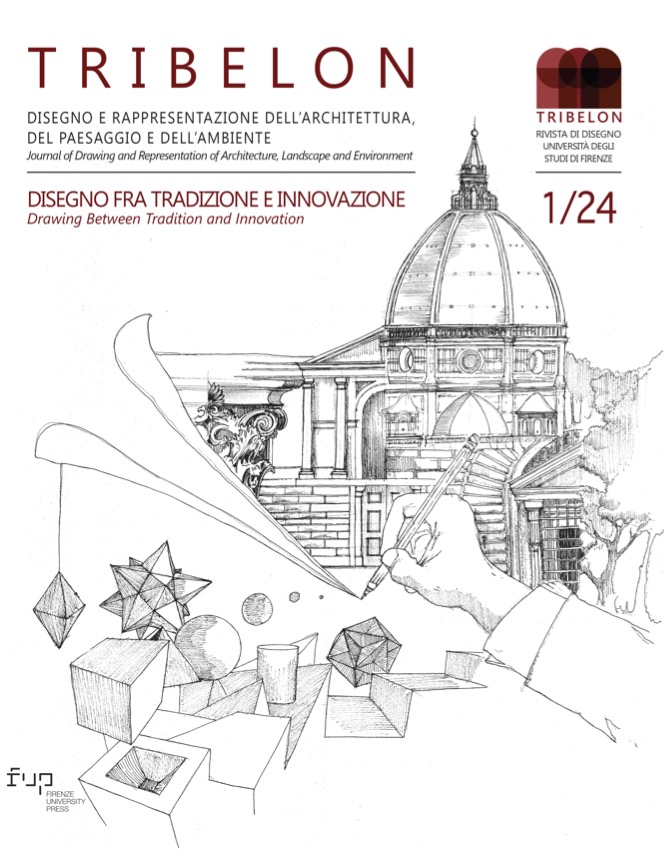Published 2024-07-11
Keywords
- Representation,
- Perception,
- Likeness,
- Recognition,
- Images
How to Cite
Copyright (c) 2024 Carlos Montes Serrano

This work is licensed under a Creative Commons Attribution 4.0 International License.
Abstract
The present essay concisely addresses the psychological roots or foundations of graphic rep- resentation. To do this, it presents some ideas from Karl Popper, Karl Bühler, Johan Huizinga, Samuel Coleridge, Ernst Kris, Julián Marías, C. S. Lewis, and especially, Ernst Gombrich, gath- ering valuable insights from all of them for the analysis of any drawing. First, some ideas are mentioned that were raised in a debate between Karl Popper and Konrad Lorenz regarding the emergence of language and the human capacity for deception and simulation. The psycholo- gist and linguist Karl Bühler, in his Theory of Language, refers to graphic representation as a non-linguistic representation system, spanning from the most illusory images to those with minimal iconicity. The cultural historian Johan Huizinga explains in his book Homo Ludens how the art of the graphic representation not only exhibits a series of playful characteristics but that it is precisely the innate playful tendency in humans that has given rise to all artistic manifestations. In this sense, the poet Samuel Coleridge describes how, in artistic enjoyment, there is always a willing suspension of disbelief. Ernst Kris, an art historian and psychiatrist, highlights in his book, The Legend of the Artist, the power of imagination in the creativity of artistic forms, thanks to the plasticity of the human mind that allows us to take one thing for another. These insights of Ernst Kris are enriched by the ideas of the philosopher Julián Marías, who addresses the issue from the beautifying nature of illusory deception. The medievalist and literary critic C.S. Lewis opens new perspectives on what we understand as the resemblance or likeness between reality and a drawing. Meanwhile, the cultural historian E.H. Gombrich summarizes and completes this entire set of ideas, emphasizing the viewer's effort in seeking meaning in any type of representation, which allows him to highlight the important role that memory and our recollections play in the interpretation of any drawing.
References
- L.B. Alberti, De la pintura y otros escritos de arte, Tecnos, Madrid 1999.
- K. Bühler, Teoría del lenguaje, Alianza Universidad, Madrid 1979 (ed. or., Sprachtheorie, Gustav Fischer, Jena 1934).
- S.T. Coleridge, Biographia Literaria, Rest Fenner, London 1817.
- L. Da Vinci, Scritti. Tutte le opere: trattato della pittura scritti letterari scritti scientifici, Rusconi, Roma 2002.
- E.H. Gombrich, Meditations on a Hobby Horse or the Roots of Artistic Form, in L.L. White (ed.), Aspects of Form: a Symposium on Form in Nature and Art, Lund Humphries, London 1951.
- E.H. Gombrich, Arte e Ilusión: estudio sobre la psicología de la representación pictórica. Madrid: Debate, 2002 (ed. or., Art and Illusion, Pantheon Books, London 1960).
- E.H. Gombrich, Illusion and Art, in R.L. Gregory, E.H. Gombrich, Gerald Duckwoth (eds.) Illusion in Nature and Art, London 1973.
- J. Huizinga, Homo Ludens, Alianza, Madrid 1972 (ed. or. Homo Ludens, Wolters-noordhoff, Leyden, 1938).
- E.K. Kris, O. Kurz, La leyenda del artista, Cátedra, Madrid 1982 ( ed. or. Die Legende vom Künstler, Krystall-Verlag, Wien 1934).
- C.S. Lewis, They Asked for a Paper, Geoffrey Bles, Oxford 1962.
- E. Kris, Psicoanálisis del arte y del artista, Paidós, Buenos Aires 1964.
- J. Marías, Breve tratado de la ilusión, Alianza, Madrid 1984.
- Platone, Sofista, 266 c. Diálogos V, Biblioteca Clásica Gredos, Barcellona 2001.
- K. Popper, K. Lorentz, El porvenir está abierto. Conversación de Altenberg y textos del simposio sobre Popper celebrado en Viena, Tusquets editores, Barcelona 1992 (ed. or., Die Zukunft is offen, Piper, München 1985).


